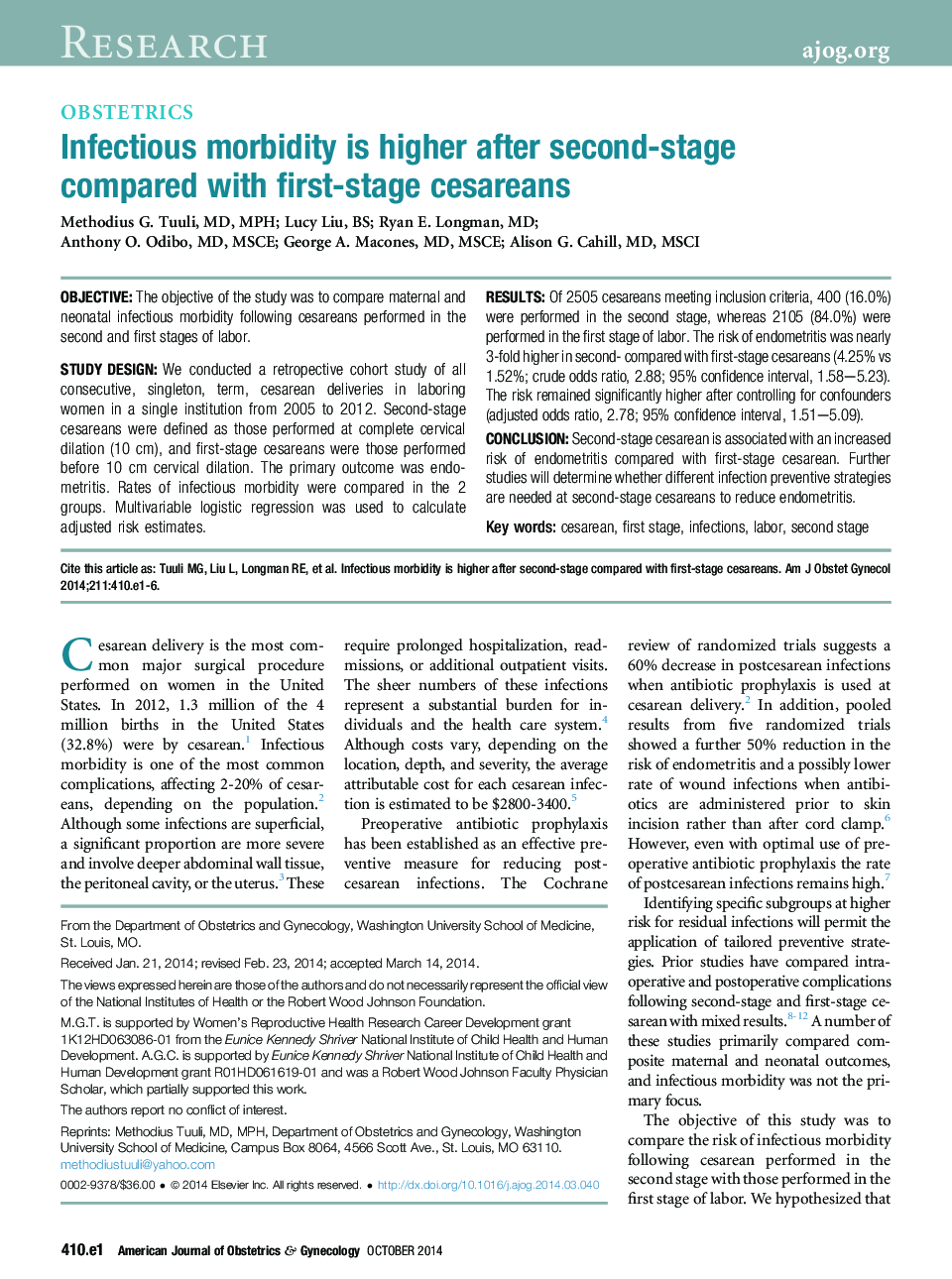| Article ID | Journal | Published Year | Pages | File Type |
|---|---|---|---|---|
| 6144814 | American Journal of Obstetrics and Gynecology | 2014 | 6 Pages |
ObjectiveThe objective of the study was to compare maternal and neonatal infectious morbidity following cesareans performed in the second and first stages of labor.Study DesignWe conducted a retropective cohort study of all consecutive, singleton, term, cesarean deliveries in laboring women in a single institution from 2005 to 2012. Second-stage cesareans were defined as those performed at complete cervical dilation (10 cm), and first-stage cesareans were those performed before 10 cm cervical dilation. The primary outcome was endometritis. Rates of infectious morbidity were compared in the 2 groups. Multivariable logistic regression was used to calculate adjusted risk estimates.ResultsOf 2505 cesareans meeting inclusion criteria, 400 (16.0%) were performed in the second stage, whereas 2105 (84.0%) were performed in the first stage of labor. The risk of endometritis was nearly 3-fold higher in second- compared with first-stage cesareans (4.25% vs 1.52%; crude odds ratio, 2.88; 95% confidence interval, 1.58-5.23). The risk remained significantly higher after controlling for confounders (adjusted odds ratio, 2.78; 95% confidence interval, 1.51-5.09).ConclusionSecond-stage cesarean is associated with an increased risk of endometritis compared with first-stage cesarean. Further studies will determine whether different infection preventive strategies are needed at second-stage cesareans to reduce endometritis.
